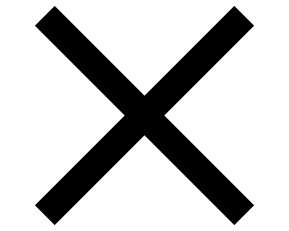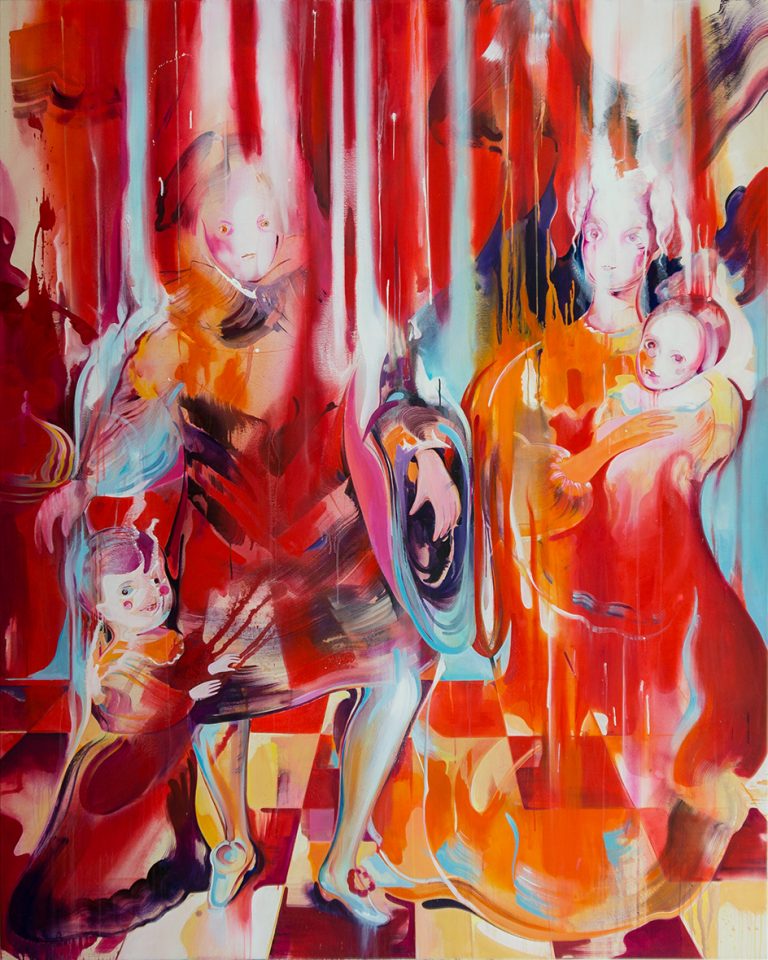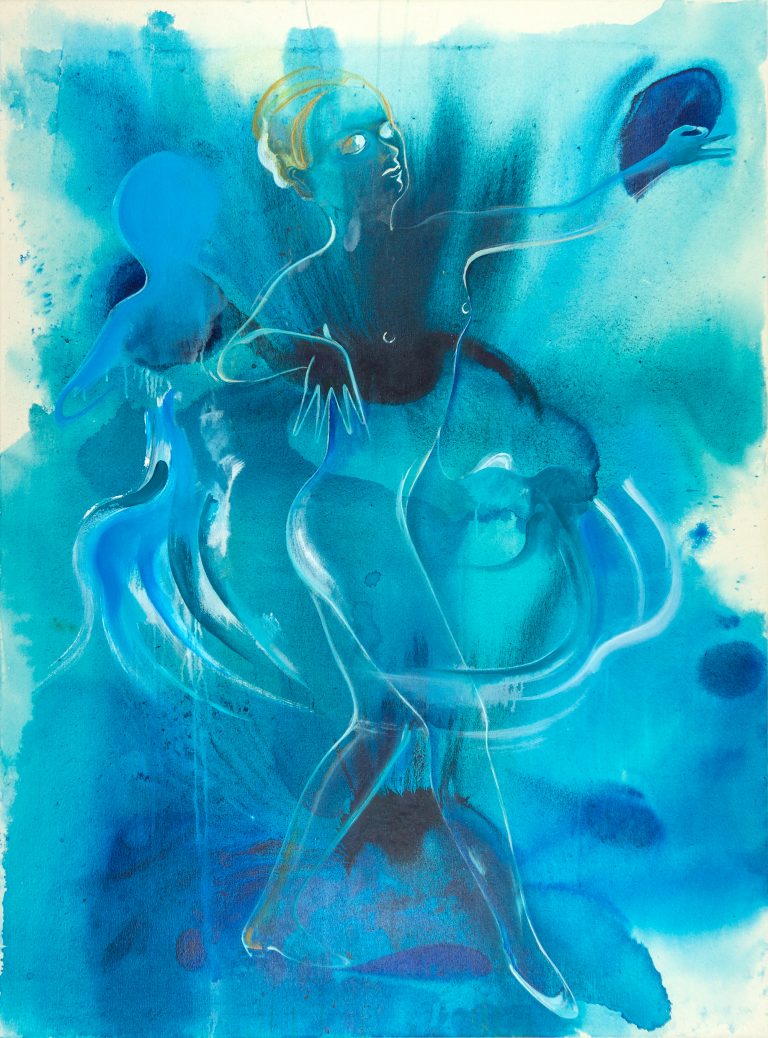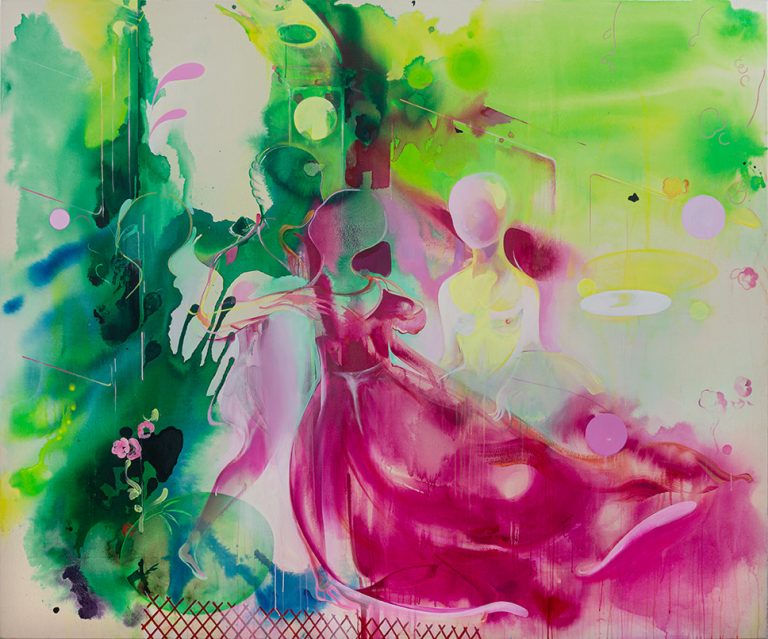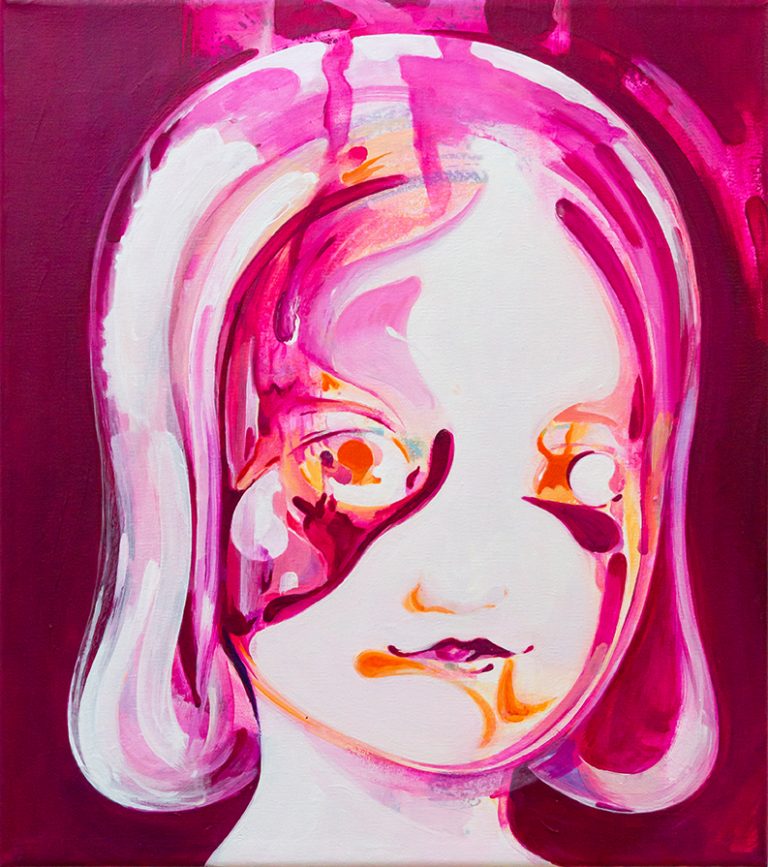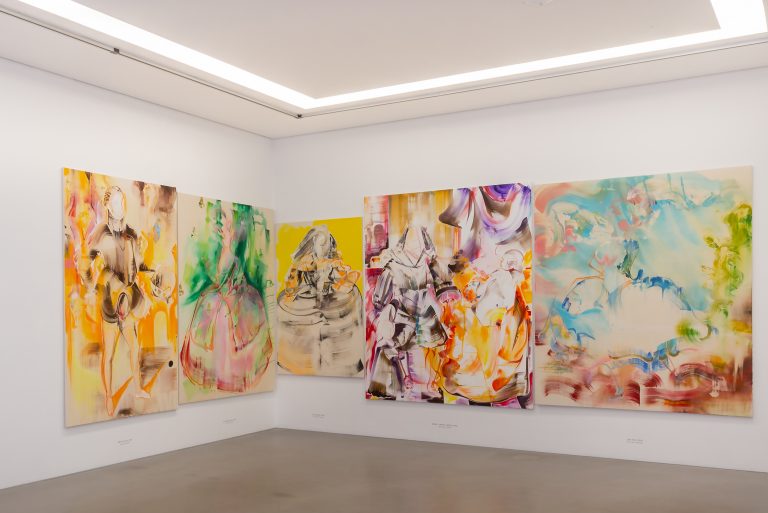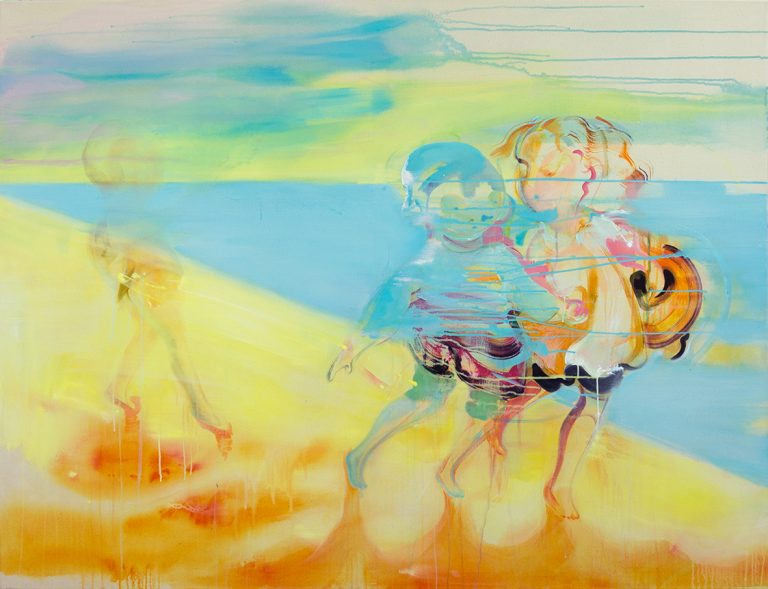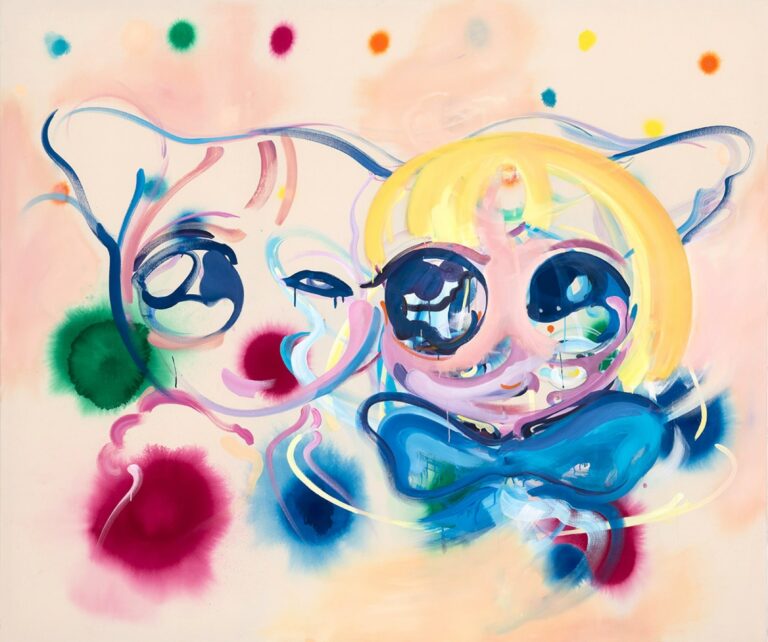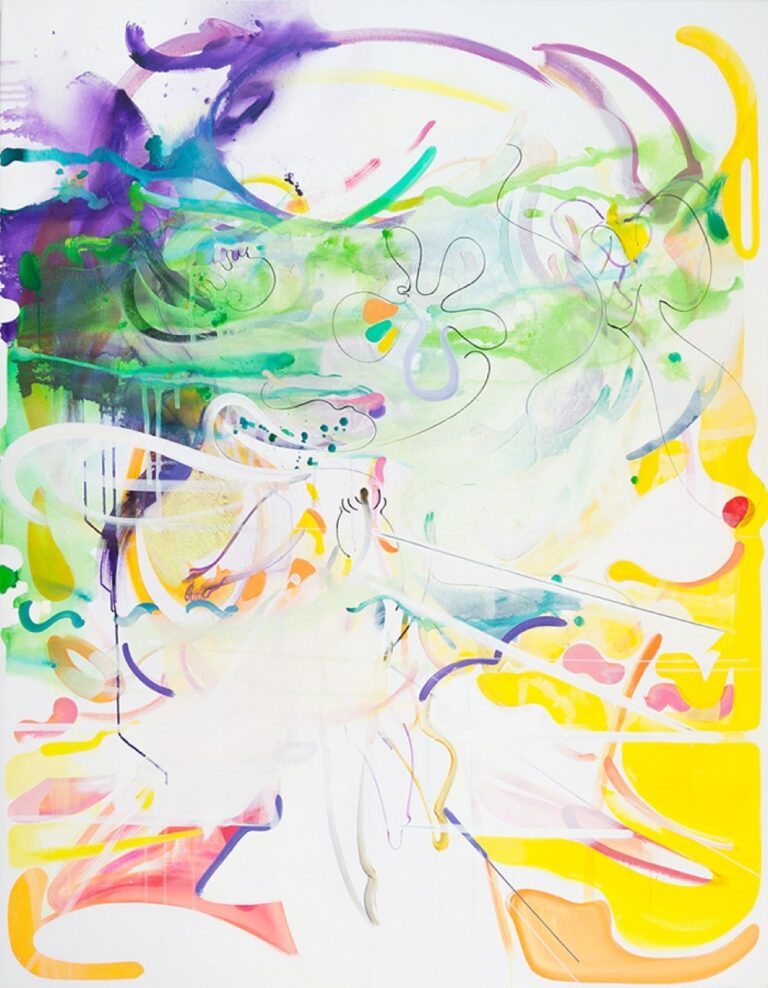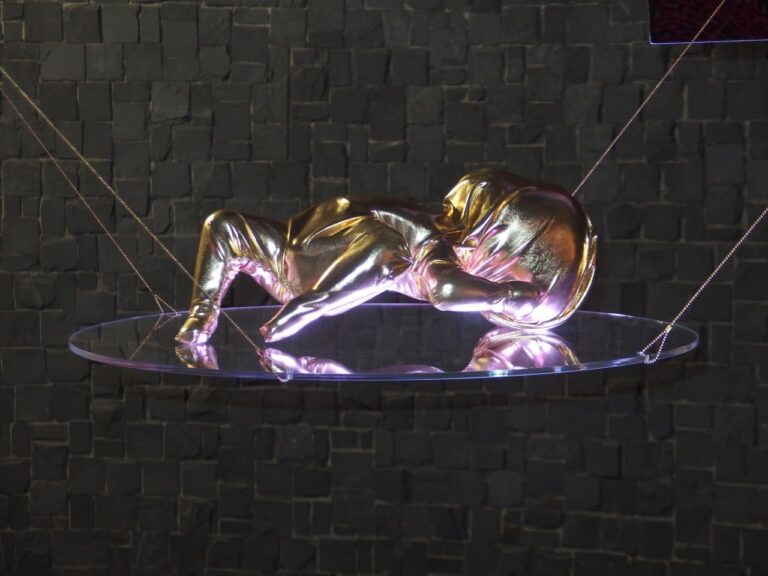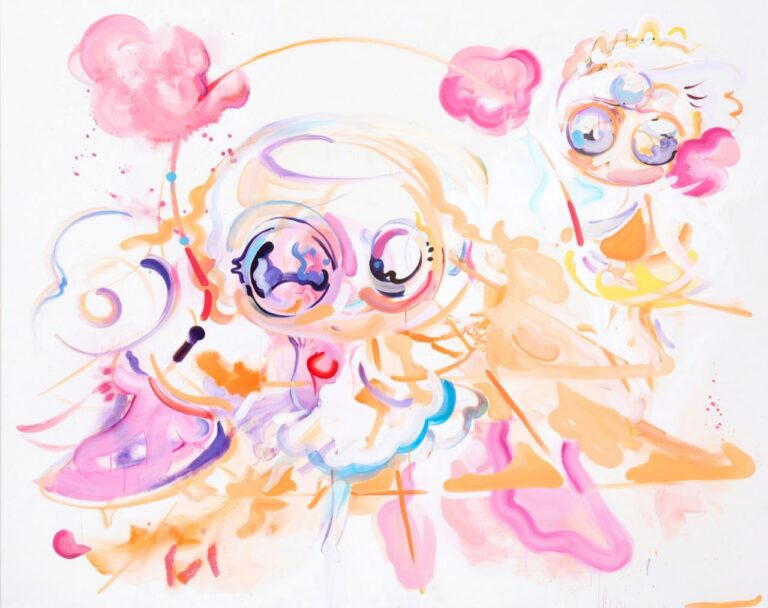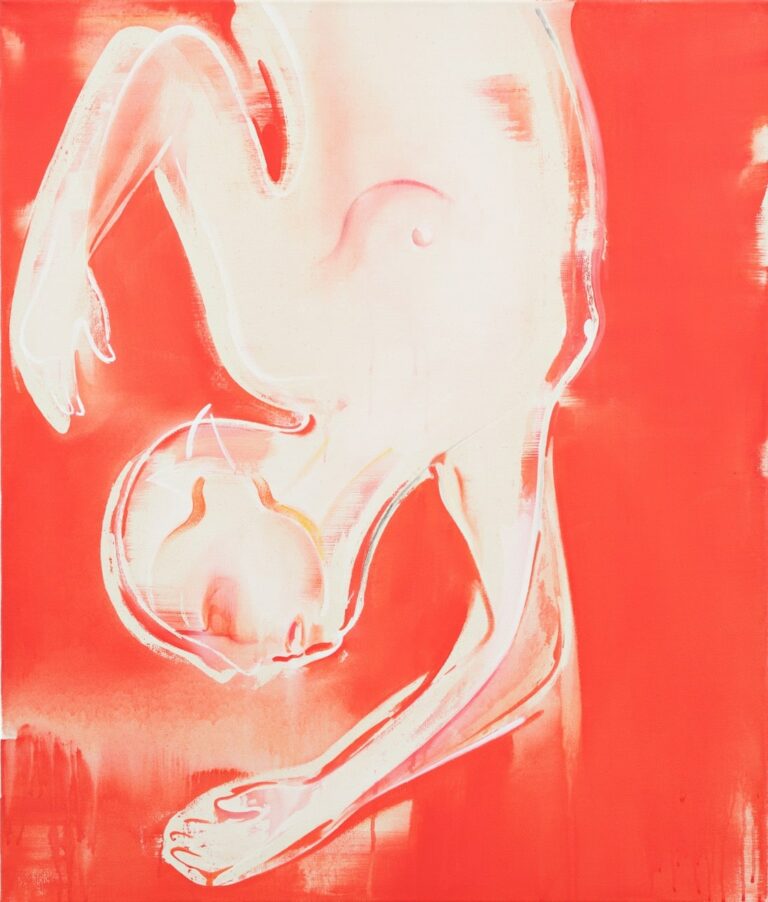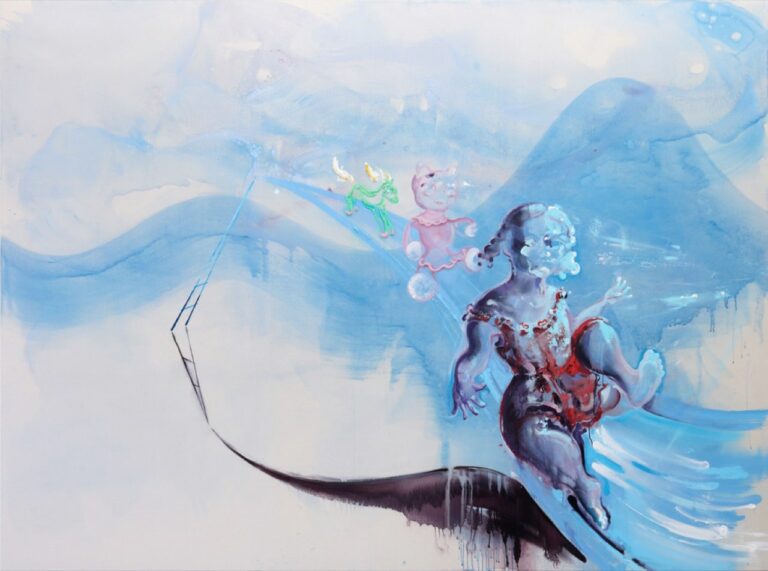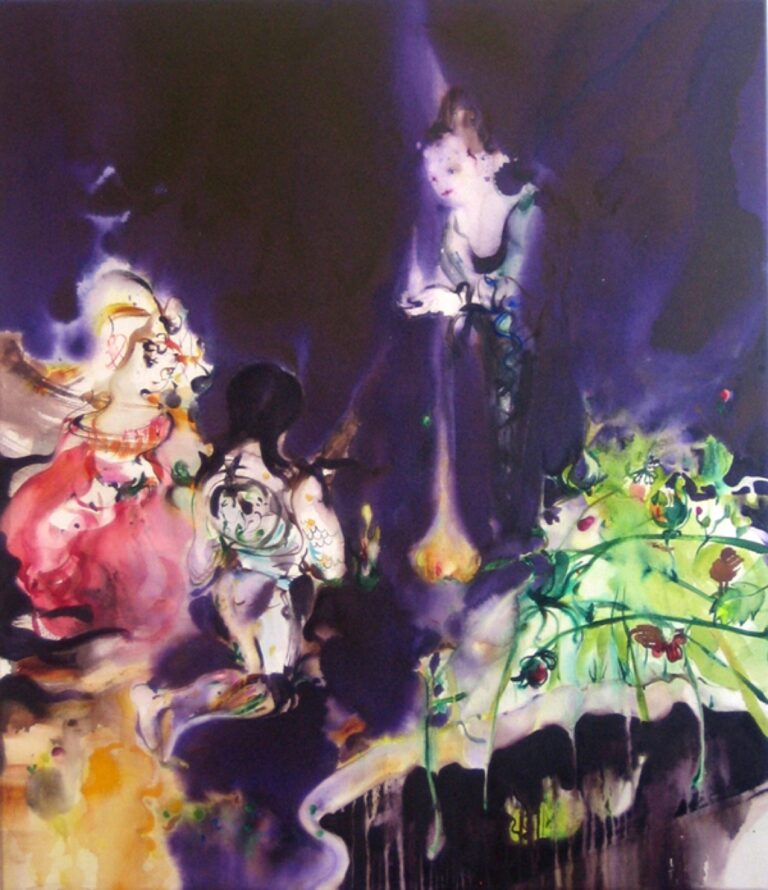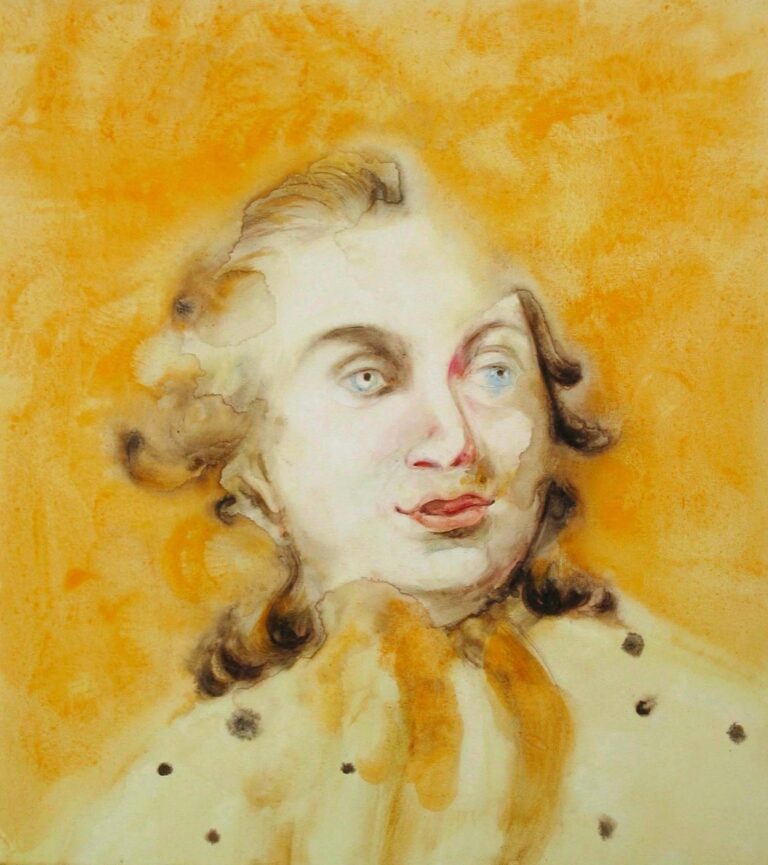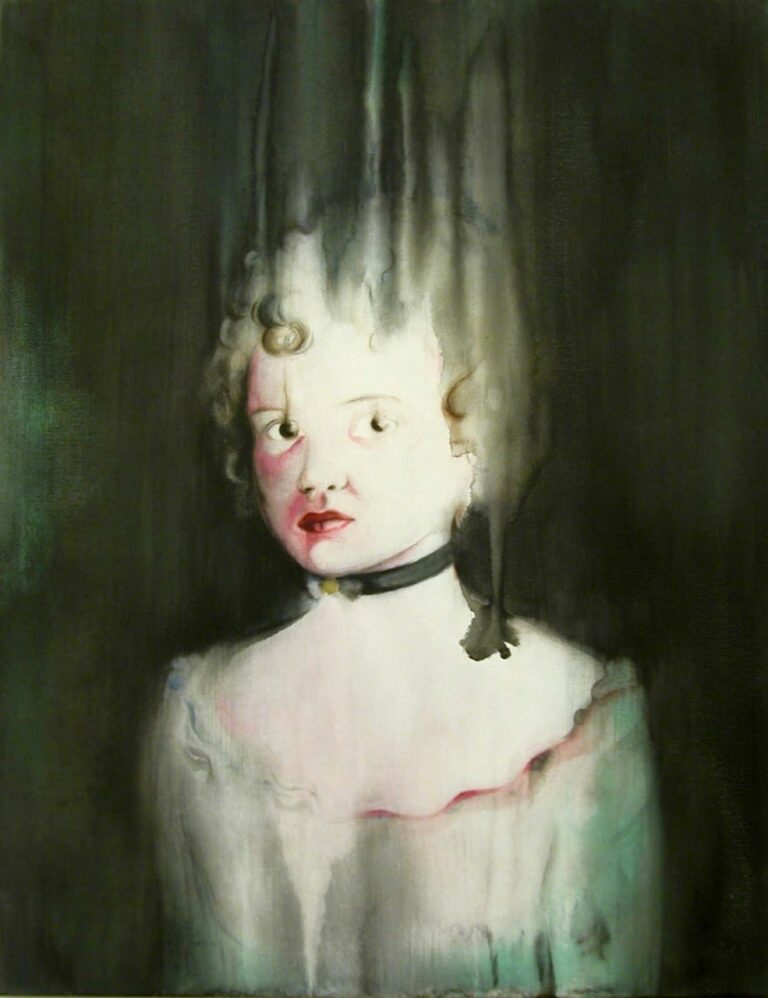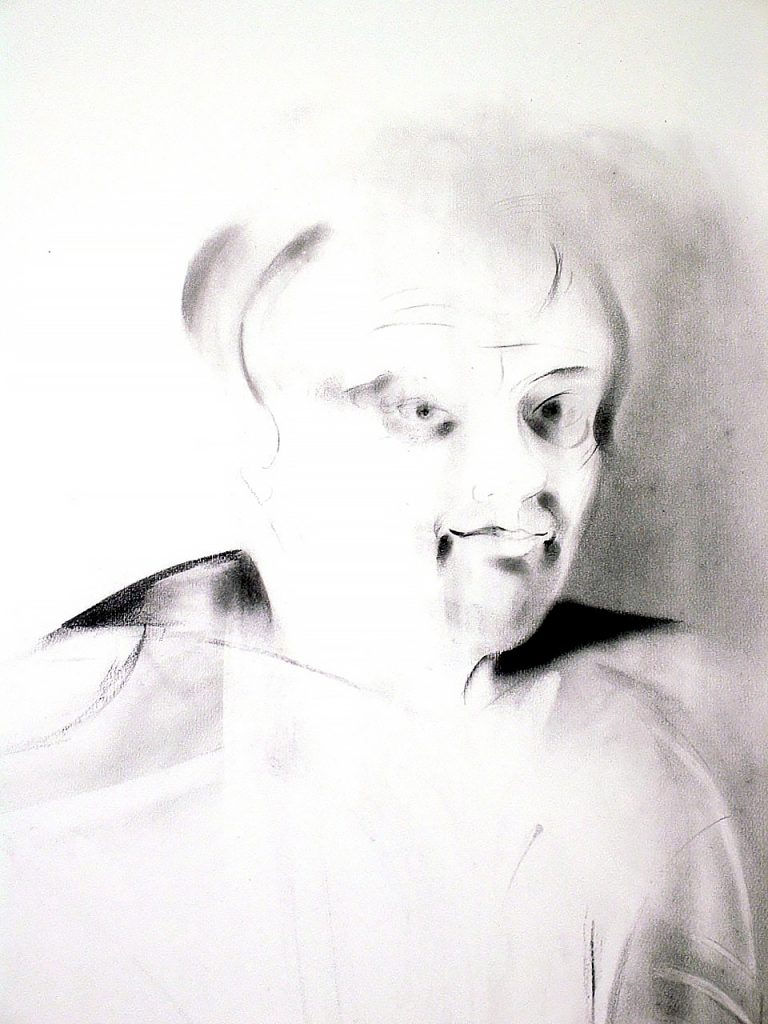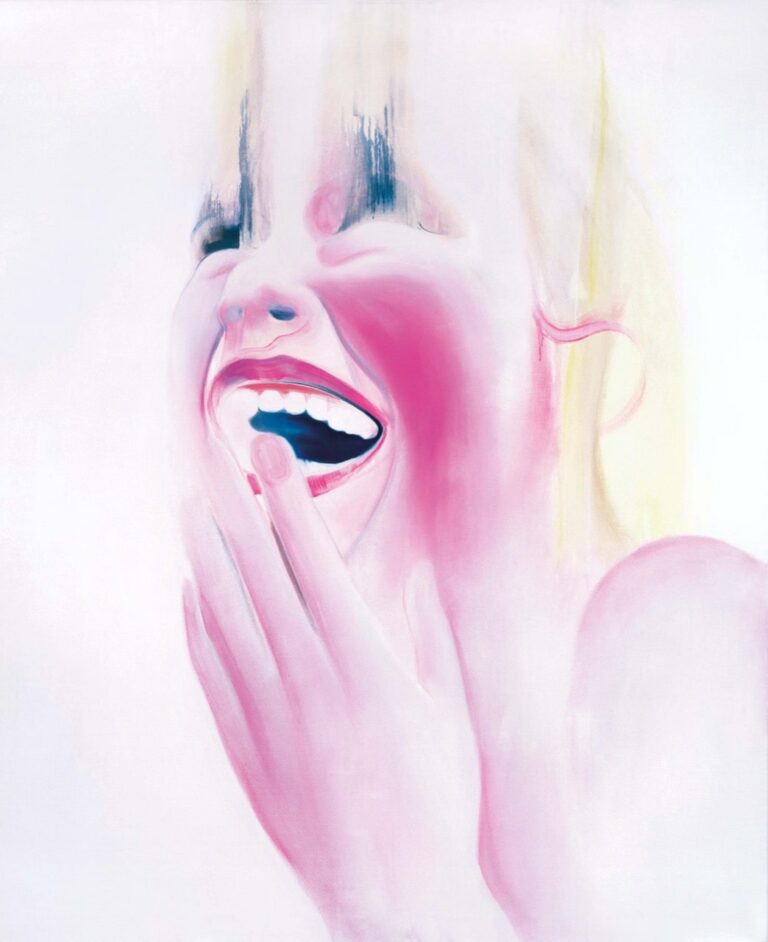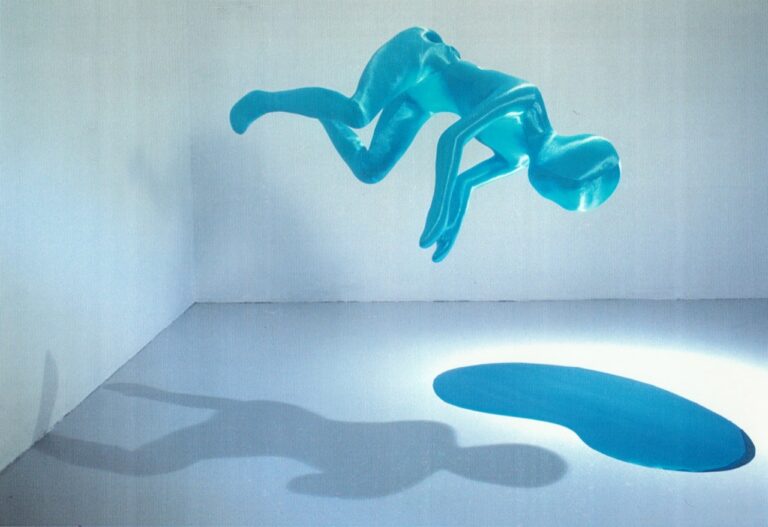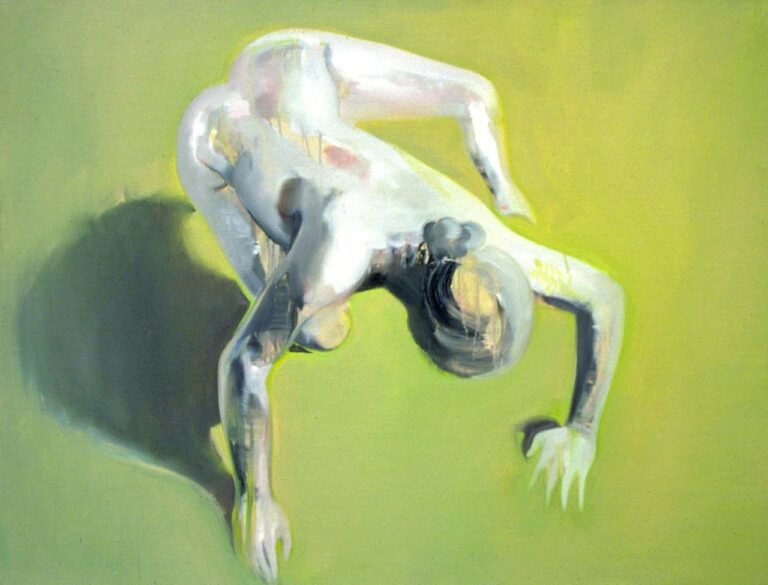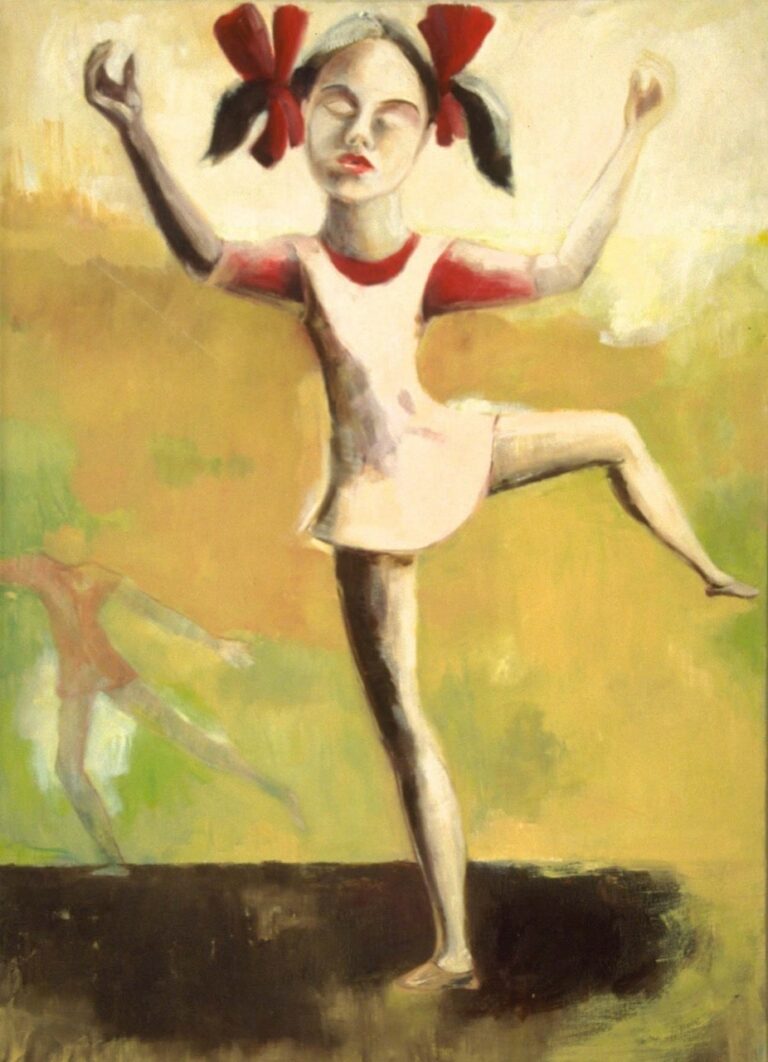(scroll down for English version)
Bettina Sellmann bezeichnet ihre drei Bilder in dieser Ausstellung als „durchsichtige Versionen alter Meister“, das heißt in unserm Fall barocke Meister und deren Porträtauffassung. Die Posen von Herrschern und Adligen fixierten damals auftragsgemäß deren Wichtigkeit und Bedeutung auf ewig für die Nachwelt. Ahnengalerien und Museen sind voll davon. Aber diese Repräsentationsporträts im immer gleichen Darstellungskanon ohne wirkliche Identität hinterm Schleier der Zeit sind heute für uns in die Beliebigkeit gesunken. Sellmann überträgt die Eigenheiten der barocken Bildnisse und den damaligen Zeitgeist metaphorisch kühn auf unsere Gegenwart: „Mehr Schein als Sein“ – versteckt geben Sellmanns Bilder Hinweise auf die Aktualität dieses Mottos. Die neuen fotografischen Posen typisierter Personen werden schon durch ihre Titel ironisiert: A Grassman – ein Grasmann oder Entitlement – Anspruch, letzteres hieß während des Ausstellungsaufbau bei uns nur „Der kleine Prinz“ als Synonym für „Helikopterkind“. Die transparenten Einhausungen von Figuren nehmen durch die flüssigen Farbverläufe den kommenden Zeitschleier vorweg – getreu dem Bibelwort „Es ist alles eitel“, das der barocke Dichter Andreas Gryphius zum Titel eines Gedichts wählte.
Last not least: Meine Kollegin Kathrin ließ sich zu einer Beobachtung inspirieren, die Ihnen/Euch nicht vorenthalten bleiben soll: „Die kindlichen porzellanartigen Geschöpfe sind keine Charakterköpfe. … Sie sind selbst wie Bonbons, die zerkaut werden. … Diese harmlose Bonbonwelt ist ebenso süß, wie sie Aggressionen auslöst.“
Gabi Ivan, from the opening speech for the exhibition außer sich – inner ich by WOMEN PAINTERS‘ NETWORK BERLIN – LEIPZIG at Inselgalerie, Berlin, 2022
Bettina Sellmann describes her three paintings in this exhibition as “ see-through versions of Old Masters“, which in our case means Baroque masters and their concept of portraiture. At the time, the poses of rulers and nobles were commissioned to record their importance and significance for posterity. Ancestral portrait collections and museums are filled with them. But these representational portraits in ever the same canon of representation without any identity beyond the veil of time have sunk into arbitrariness for us today. Sellmann metaphorically and boldly transfers the peculiarities of the baroque portraits and the zeitgeist of the time to our present day: „More appearance than reality“––Sellmann’s pictures give hidden clues to the topicality of this motto. The new photographic poses of typified people are already being made ironic by their titles: A Grassman or Entitlement, the latter referred to only as „The Little Prince“ as a synonym for „helicopter child“ during our exhibition set-up. The transparent enclosures of figures anticipate the coming veil of time through the fluid color gradients––true to the biblical phrase „All is vain“, which the baroque poet Andreas Gryphius chose as the title of a poem.
Last but not least: My colleague Kathrin was inspired to make an observation that I will not withhold from you: „The childlike porcelain-like creatures are not characters. …They are themselves like candy being chewed. …This harmless candy world is as sweet as it triggers aggression.“

